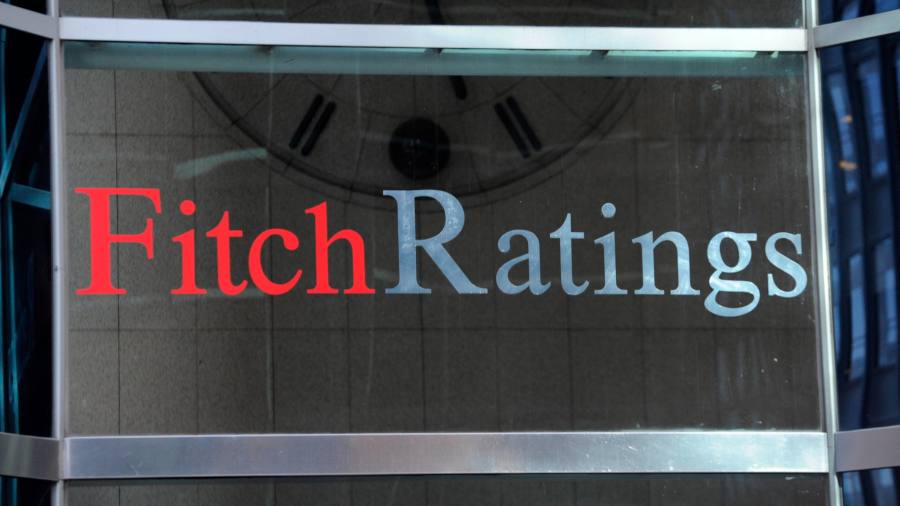Receive free Sovereign bonds updates
We’ll send you a myFT Daily Digest email rounding up the latest Sovereign bonds news every morning.
It seems a lot of people think Fitch Ratings’ credit rating downgrade of the US to Finland is much less reasonable and a bigger deal than Alphaville.
Larry Summers calls it “bizarre and inept”, Jason Furman says it’s “absurd”, Mark Zandi argues it’s “off base”, Mohamed El-Erian calls it “a strange move” while Janet Yellen says it was “arbitrary and based on outdated data”. Brad Setser puts more bones on the anti-Fitch argument in this Twitter X thread:
Strange timing from Fitch. US debt to GDP is heading down, the term premium is negative (suggesting strong demand for long-term bonds), and the only likely point of bipartisan consensus in this Congress is to avoid a an avoidable default …
— Brad Setser (@Brad_Setser) August 1, 2023
It should be stressed that Alphaville’s sanguine view is based partly on the basic truthfulness of Fitch’s jaundiced view of US governance and debt dynamics, but most of all on the fact that unless you’re a company or a country teetering on junk territory, ratings just don’t matter. And certainly not for US government debt!
As we wrote when Fitch first put the US on review for a downgrade around the debt ceiling shenanigans:
However — and we cannot stress this enough — no one, absolutely no one, should actually care. This is a complete nothingburger, whatever happens. No one invests in US Treasuries on the back of its credit rating. Even the hysteria surrounding S&P’s infamous actual downgrade to AA in 2011 — for an example watch this interview with the rating agency’s David Beers — was quickly proven to be comically overdone. Ratings can affect collateral haircuts, but this is US government debt. It is what people would put up as extra collateral. Unless there is an actual default, nothing will change (and you might be surprised at how little might change even in that Armageddon scenario).
But does it matter, somehow at least? Helpfully, the actual downgrade has triggered an overnight blizzard of research from analysts. FWIW they broadly agree with us.
As Goldman Sachs’ Alec Phillips says, with Alphaville’s emphasis below:
2. The downgrade contains no new fiscal information. Fitch’s projections are similar to our own — they imply a federal deficit of around 6% of GDP over the next few years — and Fitch cites CBO projections in its medium-term outlook, so the downgrade does not reflect new information or a major difference of opinion about the fiscal outlook. Fitch expects a mild recession in 4Q23 and 1Q24, in contrast to our expectation that the US will avoid a recession over the next year.
3. We do not believe there are any meaningful holders of Treasury securities who will be forced to sell due to a downgrade. S&P downgraded the sovereign rating in 2011 and while it had a meaningfully negative impact on sentiment, there was no apparent forced selling at that time. Because Treasury securities are such an important asset class, most investment mandates and regulatory regimes refer to them specifically, rather than AAA-rated government debt.
4. Fitch did not adjust its “country ceiling”, which it affirmed at AAA. If Fitch had also lowered the country ceiling, it could have had negative implications for other AAA-rated securities issued by US entities. This rating action does not appear to have any implications for securities issued by government-sponsored entities (GSEs), nor for municipal issuers.
However, it should be noted that some investment mandates stipulate minimum ratings based on two out of three of the big credit rating agencies. So now that Moody’s is the only one that still gives the US sovereign a triple-A grade could theoretically mean that some triple-A-only investors might have to ditch Treasuries?
JPMorgan has run the numbers on the market impact of rating downgrades on highly rated developed countries, and found that cuts by all three agencies can have a modest impact.
However, a cut by Fitch should only have a small impact of a few basis points, according to JPMorgan’s analysts Jay Barry and Jason Hunter. They say that “Treasuries already seem to display a higher risk premium than other similarly-rated DM sovereigns, indicating the cheapening could be more muted than these coefficients imply”:
Certainly, Treasuries saw elevated volatility in 2011 following S&P’s downgrade, but we would argue the US economy was on very different footing at the time. Notably, the spending cuts that ended the debt ceiling crisis of 2011 reduced federal spending by 0.7% of GDP the following year, while the deal signed into law earlier this year is expected to lower federal spending by less than 0.2% of GDP next year. Moreover, the unemployment rate was elevated at 9% then, and the Fed would unveil Operation Twist just a month later at the September 2011 FOMC meeting. Thus, we do not expect to similar levels of volatility in coming weeks, given the resilience of the US economy and the tightness of labor markets.
Of course, a downgrade might affect more ephemeral things like investor sentiment, as happened in 2011, and possibly again overnight. But Wells Fargo’s Christopher Harvey is sceptical of anything but a light and fleeting effect:
We do not expect Fitch’s downgrade to have a comparable impact to S&P’s 2011 downgrade given: (1) the different macro environments; (2) the pre-existing “Watch Negative” status; and (3) the relative weight of the rating agencies (many investors view Fitch as a respectable but distant third to S&P and Moody’s). As a result we believe any equity market pullback would be relatively short and shallow. At the time of this writing, S&P futures are down ~20bps.
On the other hand, it’s August. And in August, bad things have a weird tendency to happen to markets.
Read the full article here



